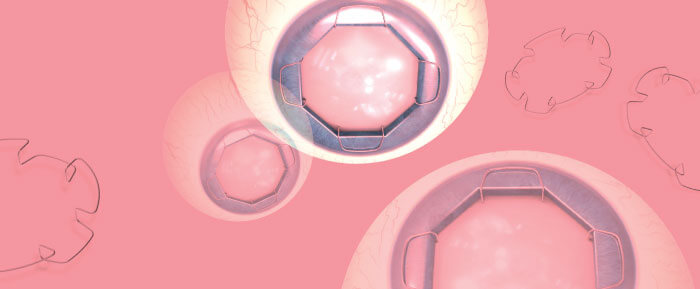
According to Charles Williamson, ophthalmic surgery specialist and director of the Williamson Eye Center in Baton Rouge, Louisiana, exposure to the surgical field is the most important thing in any surgery, and for cataract surgery this relates specifically to the iris and the capsular opening. It means that any complications in surgery can be inversely proportional to the size of the pupil. “In cases of a small capsular opening during phacoemulsification,” explains Williamson, “you could inadvertently injure the capsule itself, and that would prohibit the use of certain IOLs, such as toric or multifocal lenses, in which centration and ideal placement in an intact bag are necessary.”
Jonathan Solomon, Surgical/Refractive Director of Solomon Eye Physicians and Surgeons in Maryland, lists the potential reasons for pupils not dilating properly: “Certain medications can impact on it, and there might be history of inflammation. There could be a potential source of scarring between the iris and the lens, preventing the pupil from dilating; and finally, some patients’ pupils simply don’t dilate enough, irrespective of other factors.”
Therefore, in the cases where the pupil isn’t dilated enough, or there is a small capsular opening, it is important to expand the opening and stabilize it, to avoid potential complications. In case of phacodonesis or iridodonesis – vibration of the lens or iris with eye movement, weak or missing zonules can be suspected, stabilizing the capsule, and suspending it with a device during surgery is of vital importance.
Williamson describes tools traditionally used for such cases: iris hooks, or capsular hooks: “These little devices can expand the iris and capsule, by attaching to different points around the iris, but they are cumbersome for the surgeon and can easily become dislodged during surgery.” Other devices, which can expand the iris, are only designed to be used on the pupil, and not the capsule itself.
Is there a better way to solve this issue? X1 Iris Speculum from Diamatrix, a speculum-like nitinol device comes pre-loaded in a small barrel injector into the anterior chamber through a 2.4 mm incision. The device can capture four separate points of the iris on its own, or the iris and the capsule together, which is important in areas of weak or missing zonules. Used before or after capsulorrhexis, it is very easy to manipulate, and is completely removed after the surgery. It can be used with or without the capsular tension ring.
Williamson, who has used X1 for many years, talks about the device’s advantages: “The fact that the speculum captures the iris and the capsule together unites the anterior and posterior chambers, which results in stable hydraulics during phacoemulsification, preventing fluid or particle loss.” He explains further: “Normally, during phacoemulsification, fluid and lens particles migrate underneath the iris, over the capsule and through the zonules, but if the anterior and posterior chambers are sealed off together, the nucleus microchips are not migrating into the posterior chamber.”
Solomon, who has recently started using the X1, comments: “This device positively changed my approach to complex cataract cases. It is very gentle on the pupil margin, it holds the pupil well, and its capability of also supporting the capsule is very reassuring. I often deal with complex cases, and having a device that can serve multiple purposes is an undeniable advantage.” Solomon appreciates the smooth removal of the device: “It can be removed using a bi-manual technique, which is very straightforward, and minimally traumatic.” In his experience, with the X1, the pupil after the surgery looks intact, which is not always true of the other devices.
“The device is completely safe to use,” comments Williamson. “It can be used on pupils of any size. It is very easy to manipulate any of the speculum blades using a push-pull hook intraocularly.” Solomon agrees: “In my experience, any normal risk associated with surgical procedures is minimized when using the X1, owing to how gently the device is injected into the position. I have found that it is much less likely to create complications than other methods of expanding the iris.”
What about the learning curve? Solomon believes that any surgeon will be able to use the ring, thanks to the memory metal’s forgiving properties, and he recommends watching the insertion procedure on video tutorials supplied by Diamatrix – he even uploaded some videos online himself, to demonstrate the proper delivery and placement of the device.
Solomon’s final words, which will resonate with many surgeons: “The X1 is very competitively priced, compared to other devices I have encountered, which is an added advantage for surgeons who have to consider the bottom line.”
